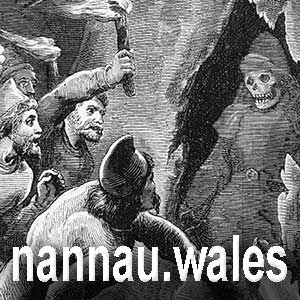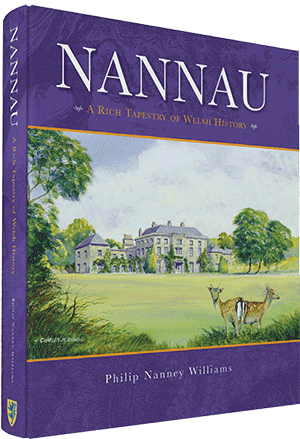
An Albumen Photo of Dolgellau from the 1870s
History
Dolgellau is a small market town, population 2,678 (2001 census) situated at the foot of the Cader Idris mountain range in southern Snowdonia. It began as a village in the twelfth century and Cymer Abbey in nearby Llanelltyd was founded in 1198. Owain Glyndŵr held the last Welsh Parliament here in 1404. It evolved into the county town of Meirionnydd in the late 19th century with its narrow streets linking together the various town squares. The present St. Mary's Church dates back to 1716, but this was built on the remains of an earlier building from the twelfth century. There are even earlier remains by Ffynnon Mair (Mary's Spring) which was thought to have had healing properties centuries ago. Roman coins were found there around two-hundred years ago.
The town's development was due to its central part in the county's woollen industry which reached its peak around 1800, but declined over the following century due to the birth of mechanical mills. During production, the wool was transported down the River Wnion, then the Mawddach before ending up in the port of Barmouth (about 10 miles away). From here it was shipped all around the world. This industry was celebrated every year in the local "Wool Race".
Printing was an important industry in the the nineteenth century with the earliest press starting in 1798. The town and local area was also the main focal point for the development of the Quakers who were established here after a visit by George Fox in 1657. In 1686 Rowland Ellis (1650-1731), a prominent local Quaker, emigrated to Pennsylvania and founded "Bryn Mawr" the famous women's college at the University in Pennsylvania (named after his home which is situated close to the town). One of the earliest Grammar Schools in Wales was also built in the town in 1665 endowed by Dr. John Ellis (who was a Rector in the town). The building was demolished in 1969.
Most people enter the town via the seven-arched bridge "Y Bont Fawr" (The Big Bridge) which spans the river Wnion. This was originally built in 1638 although it has had various modifications over the years; to accommodate the railway (which passed through the town from 1868 to 1964), the By-Pass (which opened in 1981) and restoration due to the flood damage of 1903. The Welsh gold rush of the 19th Century was centred on the area and T.H. Roberts Ironmongers was an important source of panning equipment. In fact, the gold and copper mines in the hills around the town employed over 500 miners towards the end of the Century.
The town's development was due to its central part in the county's woollen industry which reached its peak around 1800, but declined over the following century due to the birth of mechanical mills. During production, the wool was transported down the River Wnion, then the Mawddach before ending up in the port of Barmouth (about 10 miles away). From here it was shipped all around the world. This industry was celebrated every year in the local "Wool Race".
Printing was an important industry in the the nineteenth century with the earliest press starting in 1798. The town and local area was also the main focal point for the development of the Quakers who were established here after a visit by George Fox in 1657. In 1686 Rowland Ellis (1650-1731), a prominent local Quaker, emigrated to Pennsylvania and founded "Bryn Mawr" the famous women's college at the University in Pennsylvania (named after his home which is situated close to the town). One of the earliest Grammar Schools in Wales was also built in the town in 1665 endowed by Dr. John Ellis (who was a Rector in the town). The building was demolished in 1969.
Most people enter the town via the seven-arched bridge "Y Bont Fawr" (The Big Bridge) which spans the river Wnion. This was originally built in 1638 although it has had various modifications over the years; to accommodate the railway (which passed through the town from 1868 to 1964), the By-Pass (which opened in 1981) and restoration due to the flood damage of 1903. The Welsh gold rush of the 19th Century was centred on the area and T.H. Roberts Ironmongers was an important source of panning equipment. In fact, the gold and copper mines in the hills around the town employed over 500 miners towards the end of the Century.
Dolgellau.Wales




